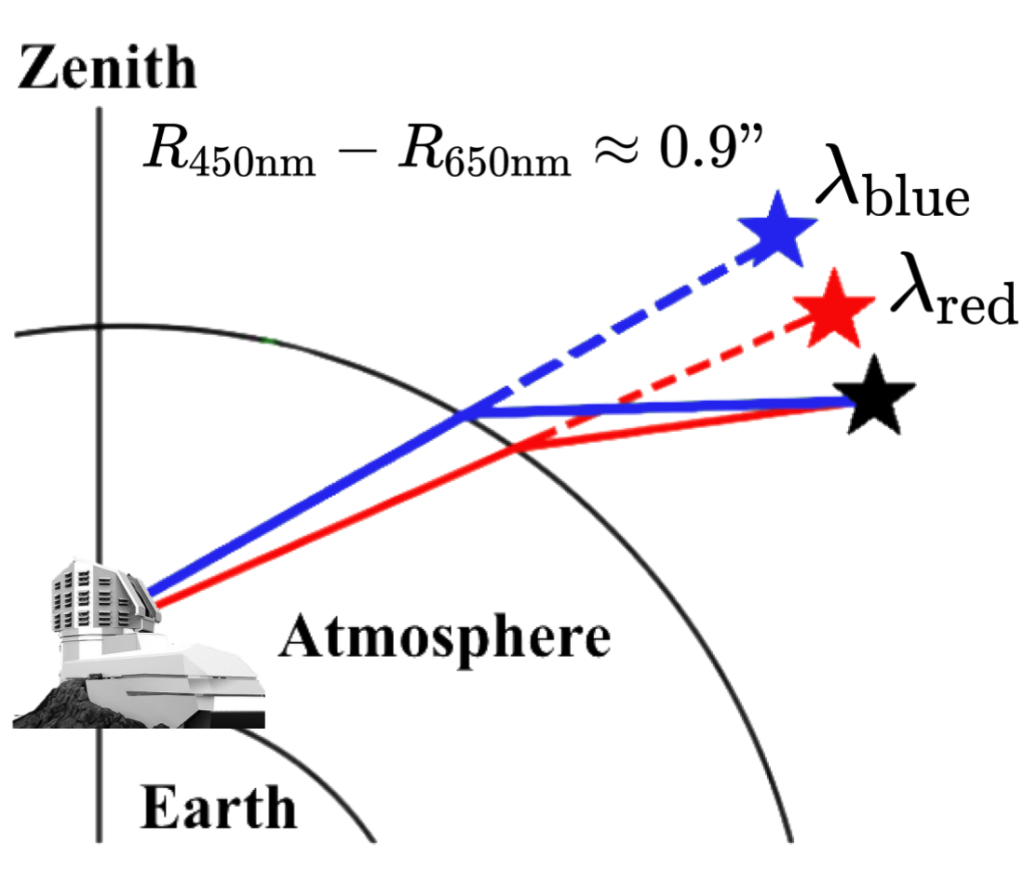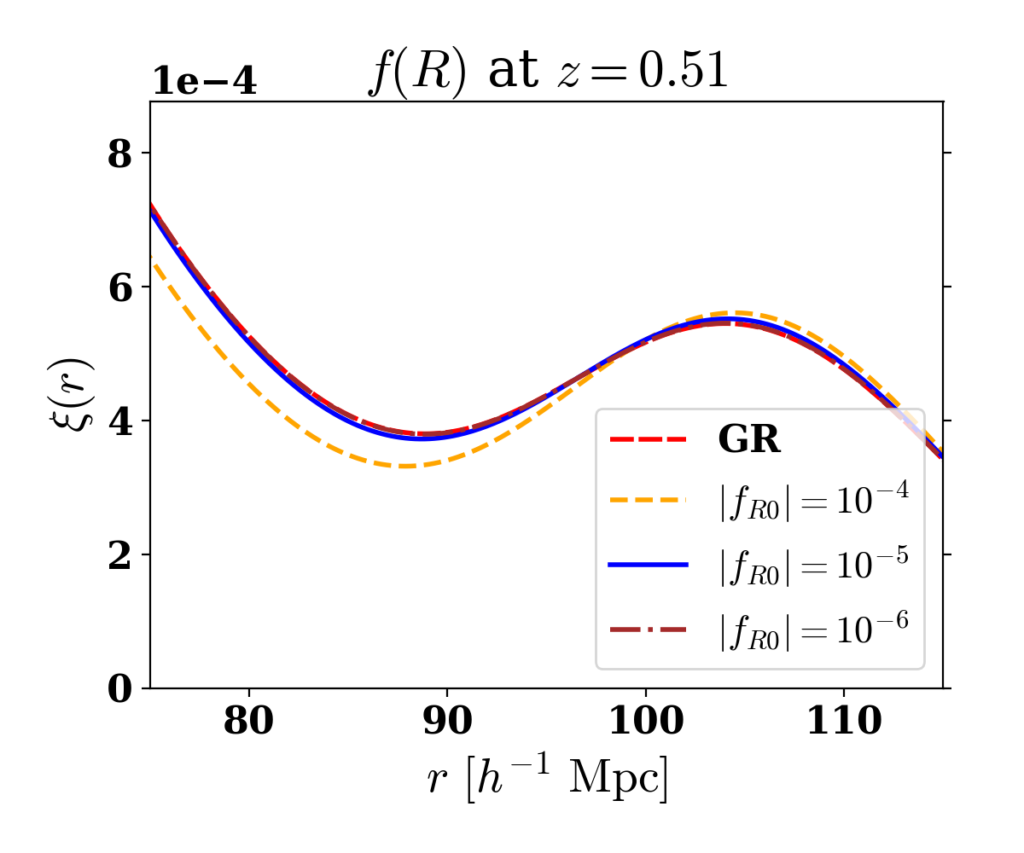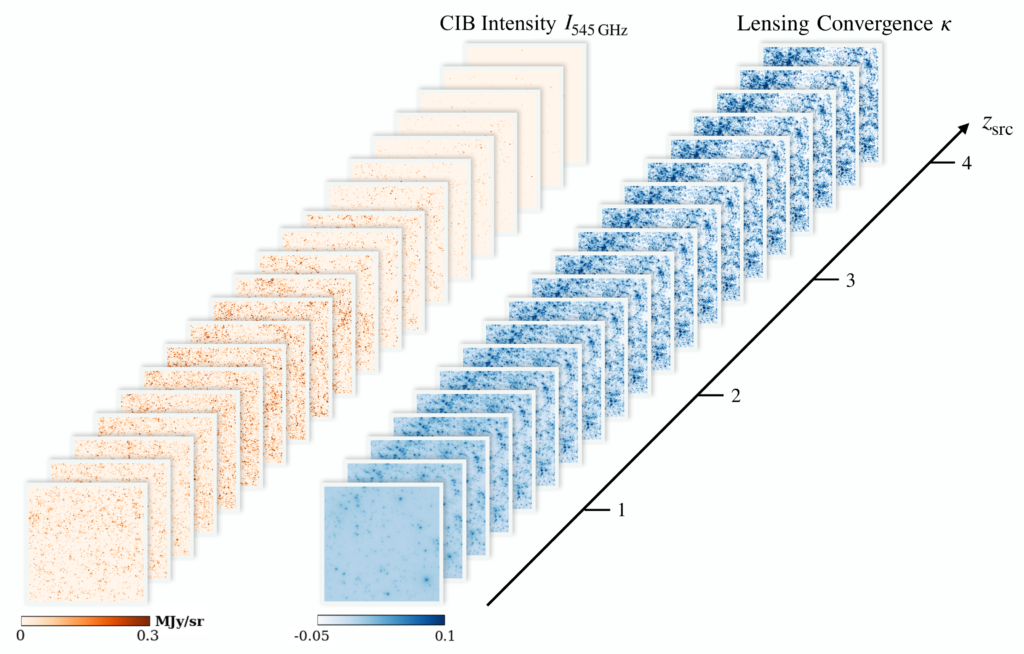Current research topics

Type Ia Supernova Cosmology
Our atmosphere bends light differently depending on the wavelength – this is called Differential Chromatic Refraction (DCR). While we need to correct for DCR to measure SNe Ia fluxes accurately, it can also help us measure redshifts of supernovae!
Type Ia supernovae occur when a white dwarf accretes enough mass from its companion to reach the Chandrasekhar limit (about 1.44 solar masses). Because this explosion happens at a specific mass, the absolute brightness of supernovae are very consistent, allowing cosmologists to use them as standardizable candles. By observing many supernovae at different redshifts, cosmologists can learn about the expansion history of the universe.
My work as part of the Dark Energy Survey (DES) and the upcoming Rubin/Legacy Survey of Space and Time (LSST) has been focused on wavelength-dependent atmospheric effects. While such effects need to be mitigated for precision cosmology, it turns out that some of these effects can be used to our advantage and measure supernovae redshifts!

Baryon Acoustic Oscillations (BAOs)
The BAO two-point correlation function for f(R) gravity at z about 0.5. The midpoint between the dip and the peak is more stable than either scales.
Before the universe was about 400,000 years old, a photon-baryon plasma oscillated back and forth due to gravity and radiation pressure countering each other, and this signature was frozen out at the surface of last scattering. Then, this signature of over- and under-densities expanded with the universe. In the two-point correlation function, this BAO feature is imprinted as a peak and a dip.
My BAO works have focused on the Linear Point (LP), which is the midpoint between the peak and the dip scales, and more stable than either the peak or the dip under non-linearities. It turns out that the LP is more stable in modified gravity, and we can measure it more precisely than either the peak or the dip!
Former research topics

Cosmic Infrared Background (CIB)
Because the CIB is broadly extended from z = 0 to 4, we split the CIB into shells and lens each shell with its corresponding lensing convergence.
The CIB is the emission from dust in star-forming galaxies at redshifts 0 to 4 or so. In these star-forming galaxies, young stars radiate in the ultraviolet or visible wavelengths, and this radiation gets absorbed by the surrounding dust. The dust re-emits this light in the far infrared (sub-mm), which we observe as the CIB.
With the Websky simulations group in Toronto, I investigated the non-Gaussianity of the CIB and its weak gravitational lensing. By splitting the CIB into multiple shells and lensing each shell with its corresponding lensing convergence, we found that although the power spectrum of the CIB changes little due to lensing (1 ~ 2%), its non-Gaussian statistics change substantially (10 ~ 20% or more).